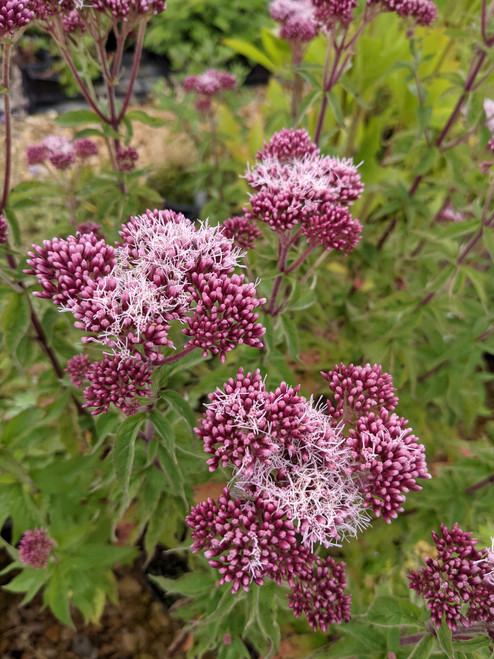Plant Overview
A neat small shrubby perennial with tiny leaves and large yellow flowers in July and August. Reddish-brown fruit capsules ripen in September and persist well into the winter.
A native herb of meadows and wood verges. From Gerard's Herball (first printed 1597): "It groweth every where in untilled pastures and fields, which are somewhat moist especially, and neare unto the borders of fields."
Height x Spread: 45cm x 30cm
History, Myth and Legend
St John's Wort has been used in traditional medicine for centuries and remains a popular commercial herbal remedy. Caution should be shown however, as it can interfere with prescription medicines.
Historically it was claimed that the herb should be gathered on midsummer eve, whilst naked, and hung up on May Day to promote fertility. This would ensure the woman would become pregnant before the next Midsummer Day.
Another belief was that if a young woman wished to capture the love of a man, she should collect a sprig of the plant, wet with the dew, on St John's day. She would be married within 12 months.
The young maid stole from the cottage door
And blushed as she sought the plant of power,
"Thou silver glow-worm, lend me thy light
I must gather the mystic St John this night,
The wonderful herb whose leaf shall decide
If the coming year shall make me a bride'.
- a traditional rhyme
One Christian legend says that the Devil sought to rid the world of this plant as it was so widely used in herbal medicines, curing those who otherwise would have died and found their way into hell. He took a dagger and stabbed it repeatedly until it bled. However, it bled the blood of St John the Baptist, strengthening its healing powers rather than weakening them. The dark dots to be seen on the underside of the petals and the topmost leaves are where the Devil stabbed the plant. Elsewhere this story is refined by adding that the plant becomes marked with the blood of John the Baptist on 29 August (the 27th according to other sources). On this date dark red spots appear on the leaves, commemorating the blood of the martyr who was beheaded on that day and the red sap in the stem and leaves of the plant is symbolic of the blood of St John.
It was said that wearing the flowering shoots would protect from evil forces, mental illness and colds. The plant was traditionally used as a painkiller and a sedative. King George VI was a firm believer of its efficacy and he even named one of his racehorses Hypericum in the plants honour. The Knights of St John of Jerusalem used the plant to treat wounds during the Crusades.
Common name(s): St John's Wort; Devil chaser; Devil's flight; Devil's scourge; God's wonder plant; Herb John; Human blood; Klamath weed; Penny John; Rosin rose; St Columba's flower; Balm of the warrior's wound; Goat weed; Touch and heal.
Photo by Kurt Stueber, granted to use under GFDL







